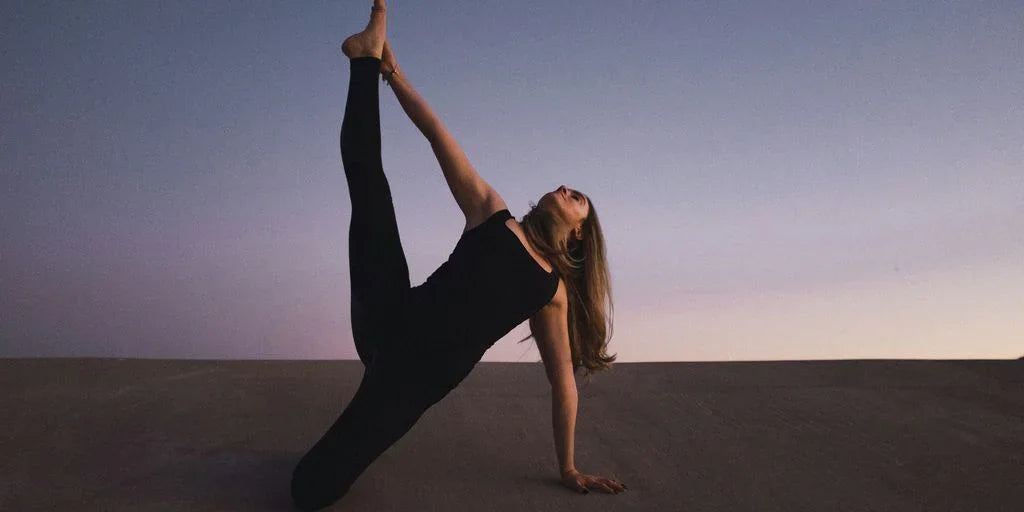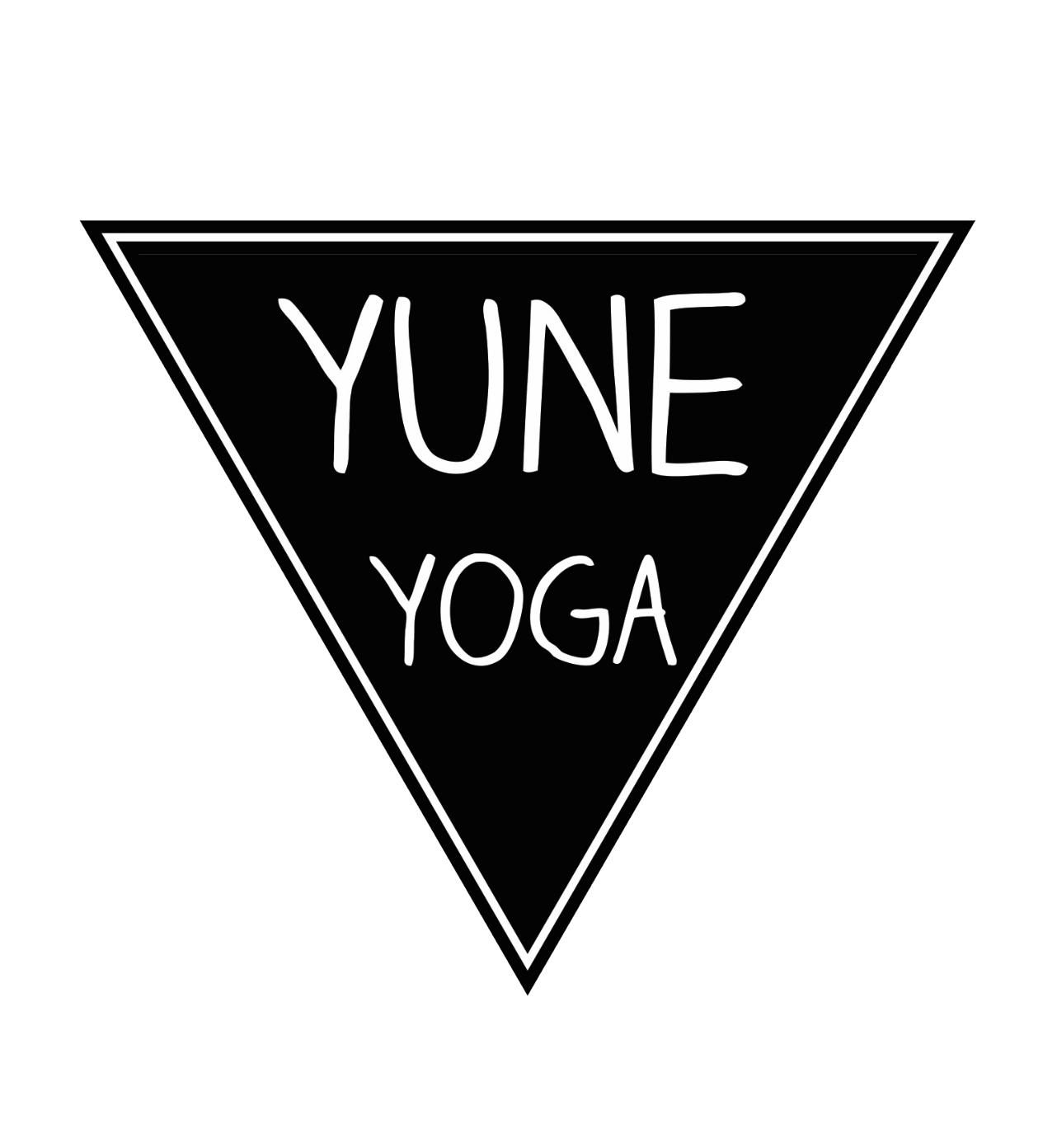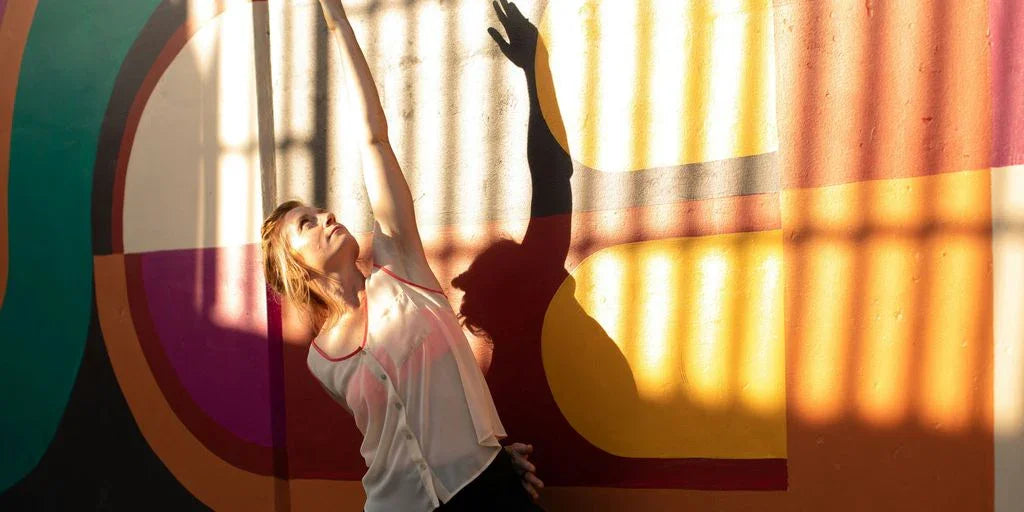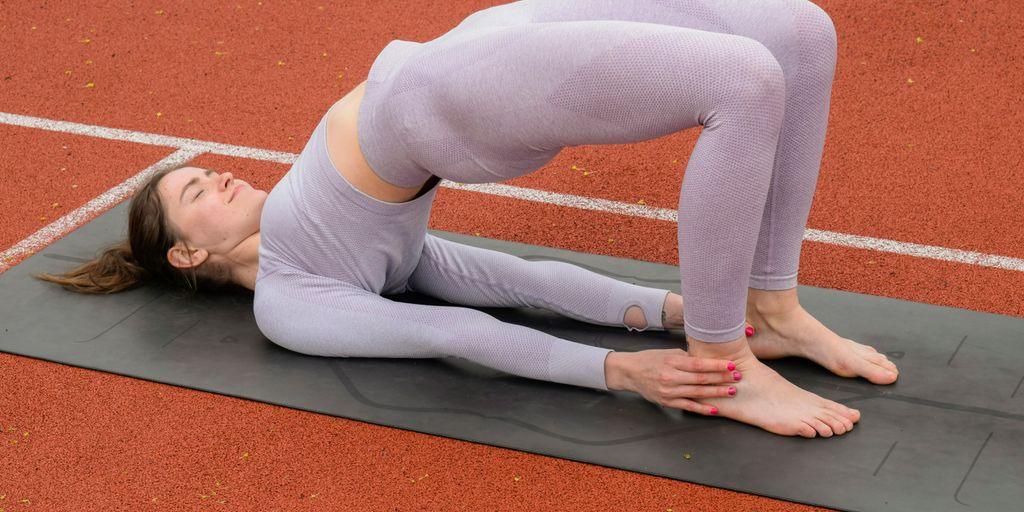
Mastering Yoga Postures for Beginners: Your Essential Guide
Hey there! If you're just starting out with yoga, it can feel a bit overwhelming, right? So many poses, so many names! But don't worry, this guide is all about making it easy. We're going to walk through some basic yoga postures for beginners, explain why they're a great place to start, and give you some simple tips to make your practice fun and safe. Whether you want to get more flexible, build some strength, or just chill out, you're in the right place.
Key Takeaways
- Starting with simple yoga postures for beginners helps you build a strong base.
- Standing poses like Mountain Pose are great for improving your balance and how you stand.
- Seated poses, such as Butterfly Pose, can help with flexibility and relaxation.
- Gentle backbends, like Cobra Pose, are good for your spine and opening up your chest.
- Adding breathing exercises makes your yoga practice even better for your body and mind.
Understanding the Basics of Yoga Postures for Beginners
What Are Yoga Postures for Beginners?
So, you're thinking about starting yoga? Awesome! Let's break down what beginner yoga postures actually are. They're not about crazy contortions or impossible poses you see on Instagram. Beginner yoga postures are simple, foundational poses designed to introduce you to the practice. Think of them as the building blocks. They help you learn alignment, balance, and how to breathe properly while doing yoga. These poses are meant to be comfortable and accessible, like Mountain Pose or Child's Pose. They're all about building a solid base before moving on to anything more challenging.
Why Start with Foundational Poses?
Why not just jump into the advanced stuff? Well, starting with foundational poses is super important for a few reasons:
- It builds confidence. You won't feel overwhelmed right away.
- You learn proper alignment, which helps prevent injuries. Nobody wants to pull a muscle on day one!
- You develop an understanding of how your breath and movement work together. This is key to a good yoga practice.
Starting with the basics lets you understand your body's limits and capabilities. It's about patience and gradual progress, which makes your yoga journey more sustainable and less risky.
Common Misconceptions About Beginner Yoga
There are a lot of myths out there that might scare people away from trying yoga. Let's bust a few of them:
- "I'm not flexible enough." That's like saying you can't start running because you're not fast enough! Flexibility comes with practice. It's not a requirement to start. You can find essential yoga poses for beginners that suit your current flexibility.
- "Yoga is too slow or boring." Beginner yoga can be as gentle or as dynamic as you want it to be. There are different styles to explore.
- "I need special equipment." Nope! A mat and some comfy clothes are usually all you need. You don't need fancy gear to get started.
Essential Standing Yoga Postures for Beginners
Standing poses are a great way to build strength and stability. They help you connect with the earth and find your center. Don't worry if you wobble a bit at first; that's totally normal! The key is to keep practicing and be patient with yourself. Let's explore some foundational standing poses.
Mountain Pose: Building Stability
Mountain Pose, or Tadasana, is the foundation for all standing poses. It might seem simple, but it's all about alignment and grounding. Think of it as your reset button, a way to check in with your body and prepare for more challenging poses. It's also great for improving your posture and body awareness.
Here's how to do it:
- Stand with your feet together or slightly apart, whatever feels most stable.
- Distribute your weight evenly across your feet.
- Engage your thighs and draw your tailbone down slightly.
- Keep your spine long, shoulders relaxed, and chest open.
- Let your arms hang naturally at your sides, palms facing forward.
- Breathe deeply and hold for 5-10 breaths. Focus on feeling grounded and centered. This pose is great for improving body awareness.
Tree Pose: Cultivating Balance
Tree Pose (Vrikshasana) is a fun and challenging pose that helps improve your balance and concentration. It requires focus and stability, but don't get discouraged if you fall out of it! Just come back to the pose and try again. It's all part of the process.
Key tips for Tree Pose:
- Start by standing tall in Mountain Pose.
- Shift your weight to one foot and place the sole of your other foot on your inner thigh or calf (avoid the knee).
- Bring your hands to prayer position at your chest or reach them overhead.
- Keep your gaze steady on a single point to help with balance.
- Hold for 5-10 breaths, then switch sides.
Tree pose is not just about physical balance; it's also about mental focus and stability. It teaches you to stay present and grounded, even when things get wobbly.
Warrior II: Strengthening Your Foundation
Warrior II (Virabhadrasana II) is a powerful pose that strengthens your legs, opens your hips, and builds stamina. It's a great way to feel strong and grounded. It might feel a bit challenging at first, but with practice, it will become easier and more comfortable.
Here's how to do it:
- Start in Mountain Pose.
- Step your feet wide apart, about 4 feet.
- Turn your right foot out 90 degrees and your left foot in slightly.
- Bend your right knee over your right ankle, keeping your knee aligned with your toes.
- Extend your arms out to the sides, parallel to the floor.
- Gaze over your right hand.
- Hold for 5-10 breaths, then switch sides. Remember to breathe and focus on mindful breathing.
Grounding Seated Yoga Postures for Beginners
Seated yoga postures are great because they help you feel more connected to the earth and yourself. They're also really good for improving flexibility and focus. I find them especially helpful after a long day when I need to unwind. Plus, they're accessible to almost everyone, regardless of fitness level. Let's explore some foundational seated poses.
Easy Pose: Finding Inner Calm
Easy Pose, or Sukhasana, is often the first pose many beginners learn, and for good reason. It's all about finding a comfortable seat and connecting with your breath. It might seem simple, but it's a powerful way to calm the mind and prepare for meditation or deeper practice. I like to use a cushion under my hips to help keep my spine straight.
- Cross your legs comfortably.
- Relax your shoulders and keep your spine tall.
- Rest your hands on your knees, palms up or down.
Butterfly Pose: Opening Your Hips
Butterfly Pose, also known as Baddha Konasana, is fantastic for opening up the hips and inner thighs. If you've been sitting for a while, this pose can really help release tension. I remember the first time I tried this, my hips were so tight! But with regular practice, it's become much easier. seated yoga poses like this one are great for flexibility.
- Sit with your spine straight and knees bent.
- Bring the soles of your feet together.
- Gently let your knees drop to the sides. You can use blocks under your knees for support if needed.
Staff Pose: Engaging Your Core
Staff Pose, or Dandasana, might look like just sitting on the floor, but it's actually a really active pose that engages your core and improves posture. It's all about maintaining a straight spine and pressing your sit bones into the ground. I often use this pose as a starting point for other seated forward folds.
Staff Pose is more than just sitting; it's about creating a strong foundation for other poses. It teaches you how to sit with proper alignment and engage your core muscles, which is essential for a safe and effective yoga practice. It's a great way to build body awareness and improve your overall posture.
Here's a quick guide:
| Step | Action | Focus |
|---|---|---|
| 1 | Sit with legs extended | Keep spine straight |
| 2 | Press sit bones down | Engage core |
| 3 | Flex feet | Activate leg muscles |
Gentle Floor Yoga Postures for Beginners
Child's Pose: Rest and Rejuvenation
Child's Pose is like a big hug for your body. It's super relaxing and a great way to chill out during your practice. It gently stretches your lower back, hips, thighs, and ankles.
Here's how to do it:
- Start on your hands and knees.
- Bring your big toes together and sit back on your heels (as much as is comfortable).
- Fold forward, resting your forehead on the mat. You can stretch your arms out in front of you or rest them alongside your body.
Child's Pose is more than just a resting pose; it's a chance to reconnect with your breath and find some inner peace. If your head doesn't reach the floor, you can place a pillow or blanket under your forehead for support. It's all about making it work for you.
Cat-Cow Pose: Spinal Flexibility
Cat-Cow is awesome for waking up your spine and getting some movement in your body. It's a gentle flow that can really help with flexibility. You can modify essential yoga poses for beginners to suit your flexibility and strength.
Here's the breakdown:
- Start on your hands and knees, with your wrists under your shoulders and your knees under your hips.
- Inhale and drop your belly towards the floor, arching your back and lifting your head and tailbone (Cow Pose).
- Exhale and round your spine towards the ceiling, tucking your chin to your chest and your tailbone under (Cat Pose).
- Continue flowing between these two poses for a few minutes, coordinating your breath with your movement.
Cobra Pose: Gentle Backbend
Cobra Pose is a nice, easy backbend that can help strengthen your back and open up your chest. It's important to listen to your body and not push yourself too far. This pose not only strengthens your back but also opens up your chest, improving posture.
Here's how to get into it:
- Lie on your stomach with your legs extended behind you and your hands under your shoulders.
- Press your hands into the floor and lift your chest off the ground, keeping your elbows slightly bent.
- Engage your core and keep your lower back relaxed. You should feel a gentle stretch in your chest and abdomen.
It's a good idea to avoid this pose if you have back problems. If you're new to yoga, it’s a perfect introduction to seated postures.
Integrating Breathwork into Yoga Postures for Beginners
The Importance of Mindful Breathing
Mindful breathing is a game-changer in yoga. It's not just about getting air into your lungs; it's about connecting your mind and body. This connection is what transforms a series of stretches into a truly mindful practice. When you focus on your breath, you're better able to stay present in the moment, which helps you get more out of each pose. It's like hitting the reset button on your mind.
Basic Breath Techniques for Yoga
There are a few basic breath techniques that are super helpful for beginners. Here are a few to get you started:
- Ujjayi Breath (Ocean Breath): This involves slightly constricting the back of your throat as you inhale and exhale through your nose. It creates a soft, ocean-like sound. This breath control helps to calm the mind and generate internal heat.
- Diaphragmatic Breathing (Belly Breath): Place one hand on your chest and the other on your belly. As you inhale, your belly should rise while your chest remains relatively still. As you exhale, your belly should fall. This encourages full lung capacity and relaxation.
- Alternate Nostril Breathing (Nadi Shodhana): Use your fingers to close one nostril at a time as you inhale and exhale. This is said to balance the energy channels in your body and calm the nervous system.
Connecting Breath to Movement
Connecting your breath to your movements is where the magic happens. Inhale as you expand or lengthen, and exhale as you contract or fold. For example, inhale as you lift your arms overhead in Mountain Pose, and exhale as you fold forward in a forward bend. This synchronization helps you move more fluidly and deeply into each pose. It's like your breath is guiding you, making the whole experience more intuitive.
Think of your breath as an anchor. When your mind starts to wander, bring your attention back to your breath. This simple act can help you stay grounded and present, both on and off the mat. It's a tool you can use anytime, anywhere to find a sense of calm and focus.
Tips for a Successful Yoga Practice for Beginners
Listening to Your Body's Signals
One of the most important things to remember as a beginner is to listen to your body. Yoga isn't about pushing yourself to the limit; it's about finding a comfortable and sustainable practice. If a pose feels painful, modify it or skip it altogether. It's okay to take breaks and rest when you need to.
Your body is your best guide. Pay attention to the sensations you're experiencing and adjust your practice accordingly. Don't compare yourself to others; everyone's journey is unique.
Consistency Over Intensity
It's better to practice yoga for a short amount of time regularly than to do a long, intense session once in a while. Aim for consistency over intensity. Even 15-20 minutes of yoga a few times a week can make a big difference in your flexibility, strength, and overall well-being. Think of it as building a habit, not completing a workout. A regular practice schedule is key.
Here's a simple way to think about it:
- 15 minutes, 3 times a week: Great for beginners.
- 30 minutes, 2 times a week: A good step up.
- 60 minutes, once a week: Better than nothing, but less effective than shorter, more frequent sessions.
Seeking Qualified Guidance
While there are many online resources available, it's always a good idea to seek guidance from a qualified yoga instructor, especially when you're just starting out. A teacher can help you with proper alignment, modifications, and injury prevention. They can also provide personalized feedback and support. Consider taking a beginner's class or working with a certified yoga instructor one-on-one.
Here are some benefits of having a teacher:
- Personalized feedback on your form.
- Guidance on modifications for your body.
- A safe and supportive learning environment.
Building a Sustainable Yoga Routine for Beginners
Creating a Regular Practice Schedule
Okay, so you're digging the yoga thing, but how do you actually make it stick? It's easy to get excited at first, then life happens, and suddenly it's been three weeks since you last unrolled your mat. The trick is to start small and build from there. Don't aim for an hour every day right off the bat. Instead, try 15-20 minutes, two or three times a week. Find a time that usually works for you – maybe before the kids wake up, during your lunch break, or right before bed. Put it in your calendar like any other appointment, and treat it as non-negotiable. Consistency is way more important than duration when you're first starting out. Think of it as building a habit, not crushing a workout. To help with this, consider exploring local yoga studios to find a class that fits your schedule.
Modifying Poses for Your Body
Yoga isn't about forcing yourself into pretzel shapes. It's about meeting your body where it's at today. And that might mean using modifications. Can't touch your toes in a forward fold? Bend your knees! Can't hold plank? Drop to your knees! There's no shame in modifying. In fact, it's smart. It prevents injuries and allows you to actually enjoy the practice. Use props like blocks and straps to help you find proper alignment and support. Remember, yoga is a journey, not a competition. Listen to your body and adjust as needed. If a pose doesn't feel right, don't do it! There are always alternatives.
Progressing Safely in Your Journey
So, you've been doing yoga for a few weeks, and you're feeling stronger and more flexible. Awesome! But don't get ahead of yourself. It's tempting to jump into advanced poses, but that's a recipe for injury. Instead, focus on deepening your understanding of the foundational poses. Can you hold them longer? Can you find more stability and ease? Gradually introduce new poses, one at a time. Pay attention to how your body responds. If you feel any pain, back off. And remember, progress isn't always linear. Some days you'll feel amazing, and other days you'll feel stiff and tired. That's normal. Just keep showing up and doing what you can. Consider joining an online yoga studio for guidance and support as you progress.
Yoga is a marathon, not a sprint. It's about building a sustainable practice that you can enjoy for years to come. Be patient with yourself, celebrate your progress, and remember to have fun!
Here's a simple way to track your progress:
| Week | Frequency | Duration | Focus |
|---|---|---|---|
| 1-2 | 2 times | 20 mins | Basic poses |
| 3-4 | 3 times | 25 mins | Core engagement |
| 5-6 | 3 times | 30 mins | Flexibility |
And here are some tips to stay motivated:
- Set realistic goals.
- Find a yoga buddy.
- Reward yourself for consistency.
Wrapping It Up
So, you've made it to the end! Starting yoga can feel a bit much at first, but honestly, it doesn't have to be. The main thing is to take your time, listen to what your body tells you, and just enjoy the ride. Whether you're getting the hang of the simple stuff or trying something a little harder, every pose helps you get better at balance, strength, and feeling calm. Remember, yoga isn't about being perfect
—it's about showing up and giving it a shot. So, roll out your mat, take a deep breath, and keep trying new things. You've totally got this!
Frequently Asked Questions
What should a beginner know before starting yoga?
Yoga is a journey, not a race. Start with simple poses and really pay attention to your body. Don't push yourself too hard, and if you have any health issues, it's smart to chat with your doctor first.
How often should beginners practice yoga?
Aim for 2-3 times a week when you're just starting. As you get more comfortable, you can practice more often if it feels right for you.
What are some easy yoga poses for beginners?
Absolutely! Poses like Mountain Pose (standing tall), Child's Pose (resting on your knees), and Cat-Cow Pose (moving your spine like a cat and cow) are great for beginners.
Do I need special equipment to start yoga?
You don't need much! A yoga mat is helpful, and comfy clothes are a must. That's usually all you need to get started.
What are the main benefits of practicing yoga?
Yoga is super helpful for making you more flexible, stronger, and better balanced. It also helps calm your mind and reduce stress.
Where is the best place to practice yoga at home?
It's best to find a quiet spot where you won't be disturbed. Make sure you have enough space to move freely without bumping into anything.


